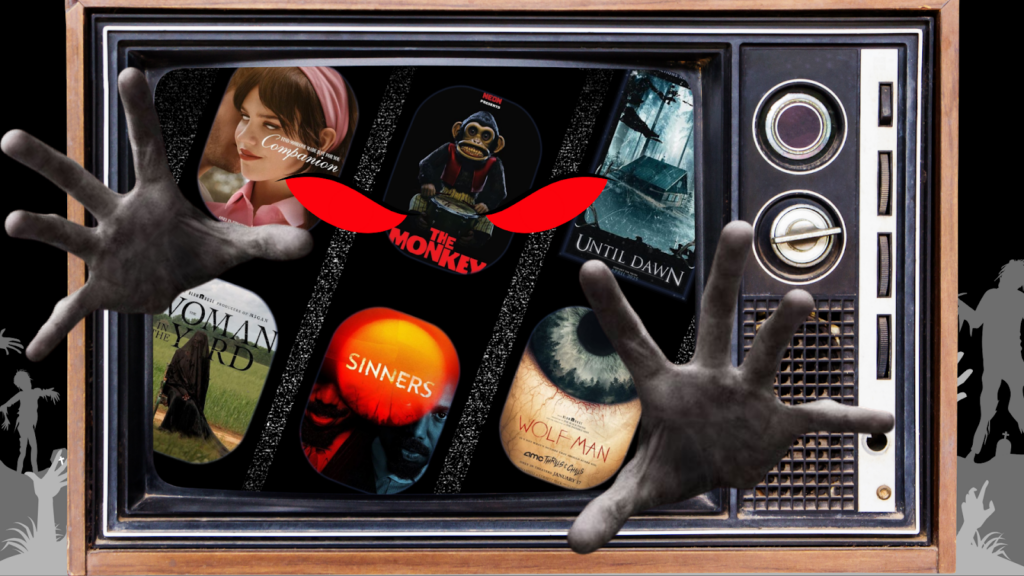
Over the past year, horror movies took over theaters everywhere, becoming the fourth highest-grossing genre in 2025 so far with a box office total of more than $54 million increasing nearly two percent from last year, according to The Numbers.
With films like “The Woman in the Yard,” “Sinners,” “Wolf Man” and “The Monkey” set to release this year, horror is anticipated to be an even more prominent genre.
Vasilios Papaioannu, a film professor at the Cathy Hughes School of Communications, said one of the main reasons horror remains popular today is due to economic factors.
Historically, horror films have become blockbuster hits, generating significant profits in the United States, Papaioannu said. Production companies recognize these trends, making them more inclined to support a storyline that could become a major success.
As an experimental filmmaker, Papaioannu sees horror as a way for cinematographers to express themselves and experiment with new ideas.
“There isn’t a specific formula to filmmaking, it becomes like a playground for experimentation. Meaning you can have horror movies that are using different cinematic modes of production,” he said.
Quadir Rayfield, a senior TV and film major from Philadelphia, said horror is the most creative genre because it blends elements from action, comedy and even romance.
Horror also frequently comments on political and societal issues, pushing audiences to confront extreme versions of real-world struggles.
Papaioannu cited “Parasite,” a Korean thriller about greed and class discrimination that centers on a poor family struggling to survive, as an example. As horror evolves, filmmakers are using the genre to address serious topics, shifting public perception and increasing audience engagement.
“You have a chance as a young filmmaker to talk about issues that you couldn’t address in horror movies before,” Papaioannu said. “They were purely for horrifying people, to make them shaken up in their seats.”
Demi-Nikole Bernadotte, a senior TV and film major from Fort Lauderdale, Florida, said America is in a tense period, and these emotions are often reflected in film, as art imitates life.
“You write what you experience. So I feel like, ingesting all the horrors of the world, we gain inspiration from that to create work,” Bernadotte said.
Bernadotte also attributed horror’s rise to influential filmmakers like Jordan Peele. As someone who draws inspiration from Peele’s work, she said his approach helped her realize new ways to present social commentary.
Black horror movies evolved in the past 10 years. This year, “Sinners” and “The Woman in the Yard” will be released, expanding on the concept of Black horror.
An essay from the New York Times, titled “How Black Horror Became America’s Most Powerful Cinematic Genre,” described the rise of Black horror movies in the past few years. According to the article, this subgenre explores the negative experiences of Black Americans face, focusing on how they are often perceived as a threat and, “a source of terror to others.”
Papaioannu noted that filmmakers are also revisiting older horror films and recycling concepts to introduce classic ideas to a new audience. This trend remains popular because many themes and topics from past films continue to resonate in today’s society.
Director Robert Eggers’ film “Nosferatu,” released on Dec. 25, is a modern take on the 1922 German silent film “Nosferatu: A Symphony of Horror.” According to Eggers’ interview with ScreenRant, the new version retells the story from the female protagonist’s perspective for a more compelling narrative.
“It had the potential to be more emotionally and psychologically complex than an adventure story about a real estate agent,” he said. “As much as it is a scary horror movie, and it is, there’s even jump scares, it is a gothic romance, and it’s a tale of love and a tale of obsession.”
According to Statistica, horror accounted for about ten percent of box office revenues in 2024, doubling its share in the span of a decade. The film industry may experience a larger increase following the release of several horror films this year.
Copy edited by Camiryn Stepteau











